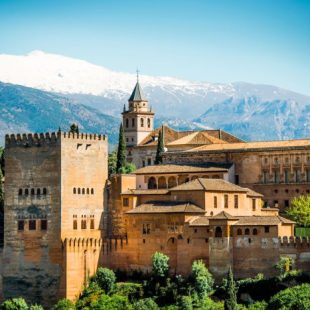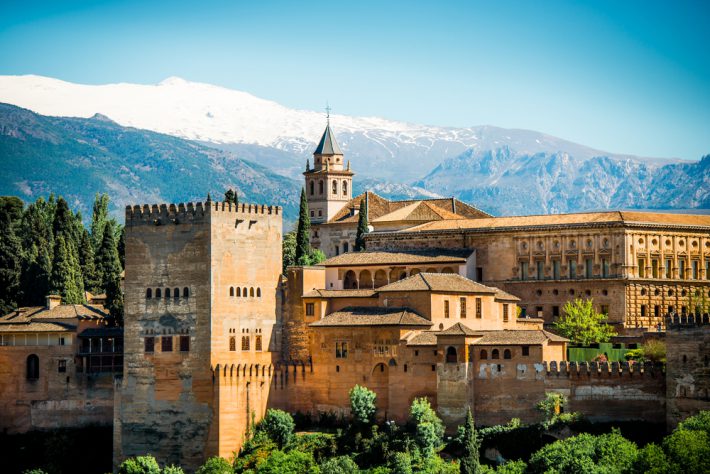
What makes Granada’s Alhambra Palace so magical?
The Alhambra Palace is Spain’s most visited tourist attraction. This jewel of a palace that sits elevated above the bustling city of Granada and with the snowy, jagged peaks of the mighty Sierra Nevada as a backdrop, is a marvel to gaze at.

The name ‘Alhambra’ is Arabic for ‘crimson castle’. When dusk settles on the twinkling city, this spectacular hilltop palace, basking under moonlight, adopts a reddish hue, augmenting its grandeur and magnificence, as it keeps a watchful eye on the city below.
The Alhambra was created originally as an all-in-one mini city, fortress, military complex, and palace. It is believed that the fortress has existed since the 9th century but it was the Nasrites who began restoring the old fortress into a palace in the 13th century.
Muhammed Al-Ahmar was the founder of the Alhambra dynasty and the work was completed by his son, Muhammed II. Restorations continued into the 14th century, with kings adding to the beautification of the palace, building further rooms, chambers, baths and towers.
In 1492, the Alhambra became a Christian court when Ferdinand and Isabel, Catholic Sovereigns, ruled Granada. Different structures were added to the palace, including a church, military garrisons and a Franciscan monastery.
During the 1700s, the Alhambra became abandoned and neglected, occupied by beggars and thieves. In the early 19th century, Napoleon’s troops converted the palace into barracks and during an attack, two of the towers were blown apart.
This neglect of the great Alhambra continued until 1870 when the palace was declared a national monument. In 1984, the Alhambra Palace became a UNESCO World Heritage site.
This great Moorish palace is an incredible place to visit, boasting an intriguing network of cool, tiled rooms, underground tunnels, beautiful pools and fountains, enigmatic carvings and breath-taking gardens.
The whole city of Granada is a gem of a Spanish city to visit. Meandering round the old Moorish gipsy quarter, visiting the many quirky little shops laden with unusual Moorish-influenced gifts and infused with an aroma of sweetly-fragranced joss sticks, is a true pleasure.
As is visiting the mighty cathedral and many churches, adjoined by tree-lined squares where street musicians set up their instruments and strum out chords to a constant crowd of onlookers.
Yes, it’s safe to say, Granada in Andalucía is a magical place, with the fascinating Alhambra Palace ensuring the city has a truly unique fairy-like identity that is second to none.


